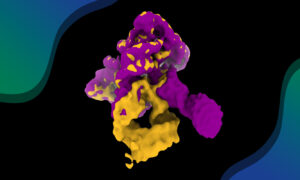
Transcription factors controlled by DNA sequence
EMBL scientists gain mechanistic insights into how cellular signalling controls gene regulation

In cells, DNA exists in a highly compact form. The scaffolding that enables this packaging of the DNA is made of proteins known as histones. More than 50 years ago, it became apparent that chemical modifications to these proteins are associated with gene activation. One example of such a modification is acetylation – the addition of an acetyl chemical group. However, precisely how cellular signals initiate this modification remained unclear.
To reveal the underlying mechanism, a team led by Daniel Panne – a former group leader at EMBL Grenoble – combined biochemical and structural studies with molecular modelling. They studied p300, an enzyme that transfers acetyl groups and regulates cell growth and division. “We need to understand how cell signals control the activity of enzymes and how this plays a role in gene regulation,” says Panne. The team found out that transcription factors – proteins that control the expression of genes – are the mediators between acetylation and cellular signalling. Transcription factors are known to control where in the genome particular genes are expressed and when. Now, the scientists have discovered that the sequence of the DNA determines where the histone is acetylated.
Nature publishes the results on 15 Oct 2018. This work was a collaboration involving scientists from EMBL, the Institute for Advanced Biosciences in Grenoble (CNRS/INSERM/Université GRENOBLE-ALPES), and Washington University, St. Louis, USA.


